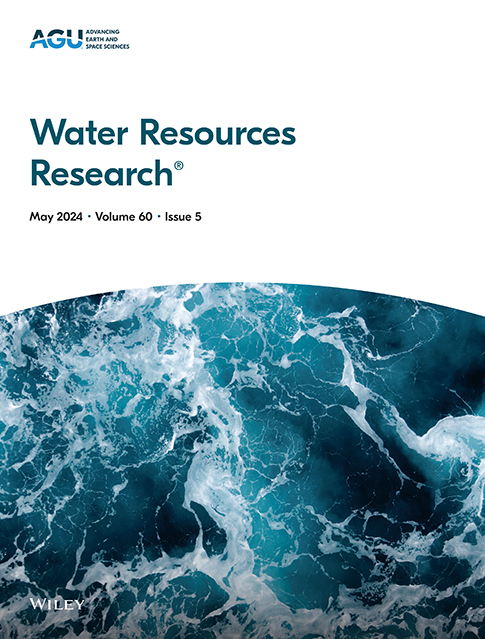Estimating Soil-Water Characteristic Curve From the Particle Size Distribution With a Novel Granular Packing Model
IF 4.6
1区 地球科学
Q2 ENVIRONMENTAL SCIENCES
引用次数: 0
Abstract
An indirect method is nowadays considered as an efficient way to obtain soil-water characteristic curve (SWCC) in engineering application. However, existing indirect models often oversimplify the soil pore and accumulation structure, which are not consistent with the natural soil. For this purpose, a novel granular packing state is obtained based on the relative compaction determined by porosity. A conceptual SWCC model (WANG24) is then established with particle size distribution (PSD) and the equivalent novel granular packing. 62 soils from 7 soil texture classes in the UNSODA database were used to validate WANG24. When comparing with the Mohammadi and Vanclooster (MV11), Arya and Heitman (AH15), and Arya and Paris (AP81) models, WANG24 shows its highest accuracy with lowest average root mean square error (RMSE) of 0.0243 (g·g−1). The capillary and adsorption on SWCC are also analyzed. The absolute errors between the soil water content predicted by equivalent novel granular packing and measured data are smaller than those of other packing states, mostly in the range of 0–0.015 (g·g−1). The soil packing states tend to be closer as the particle size decreases. In addition, the effect of initial void ratio to soil water content and matric head is explained. The model can reasonably describe the complexity of soil accumulation structure and improve prediction accuracy. It can provide a basis and reference for the subsequent hydraulic characterization of unsaturated soils.求助全文
约1分钟内获得全文
求助全文
来源期刊

Water Resources Research
环境科学-湖沼学
CiteScore
8.80
自引率
13.00%
发文量
599
审稿时长
3.5 months
期刊介绍:
Water Resources Research (WRR) is an interdisciplinary journal that focuses on hydrology and water resources. It publishes original research in the natural and social sciences of water. It emphasizes the role of water in the Earth system, including physical, chemical, biological, and ecological processes in water resources research and management, including social, policy, and public health implications. It encompasses observational, experimental, theoretical, analytical, numerical, and data-driven approaches that advance the science of water and its management. Submissions are evaluated for their novelty, accuracy, significance, and broader implications of the findings.
 求助内容:
求助内容: 应助结果提醒方式:
应助结果提醒方式:


